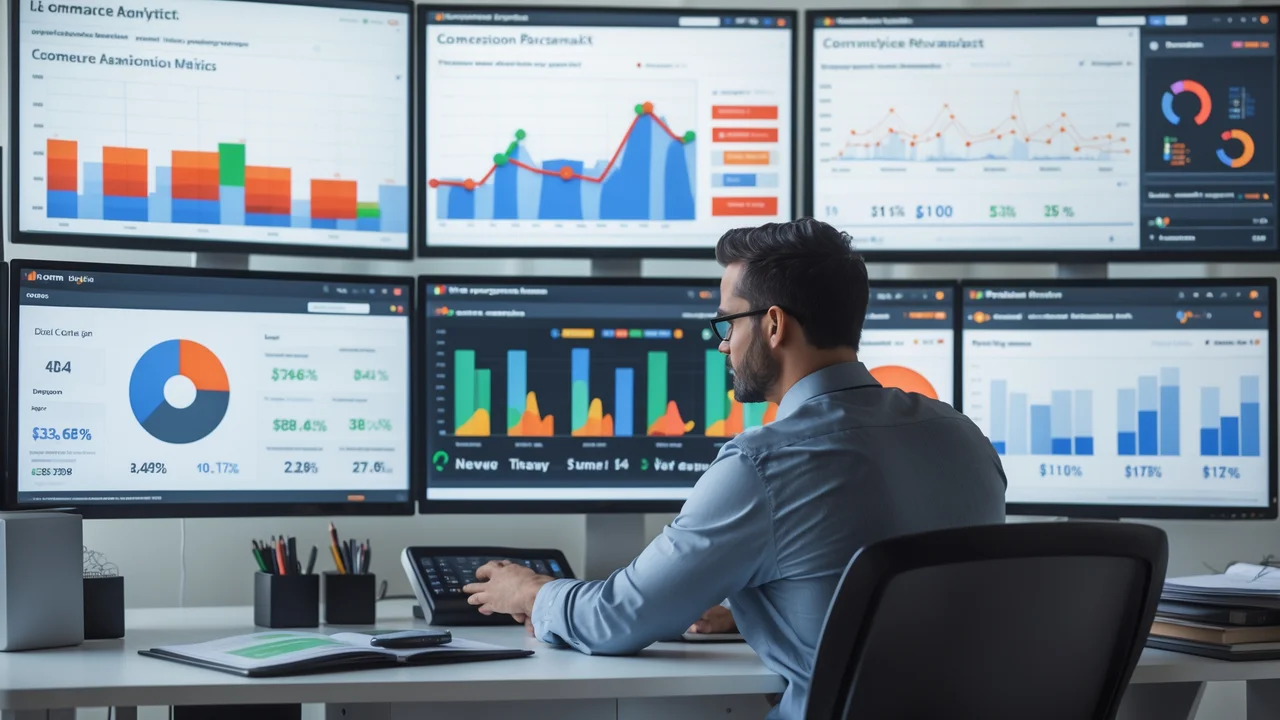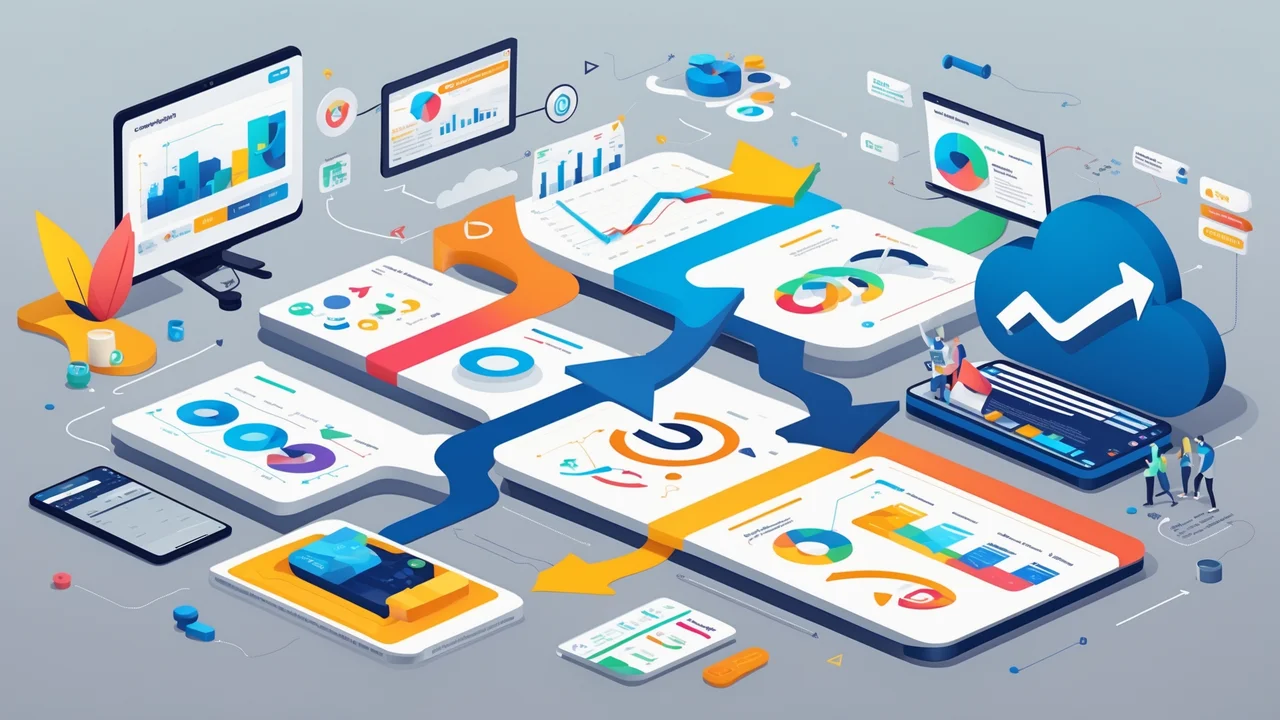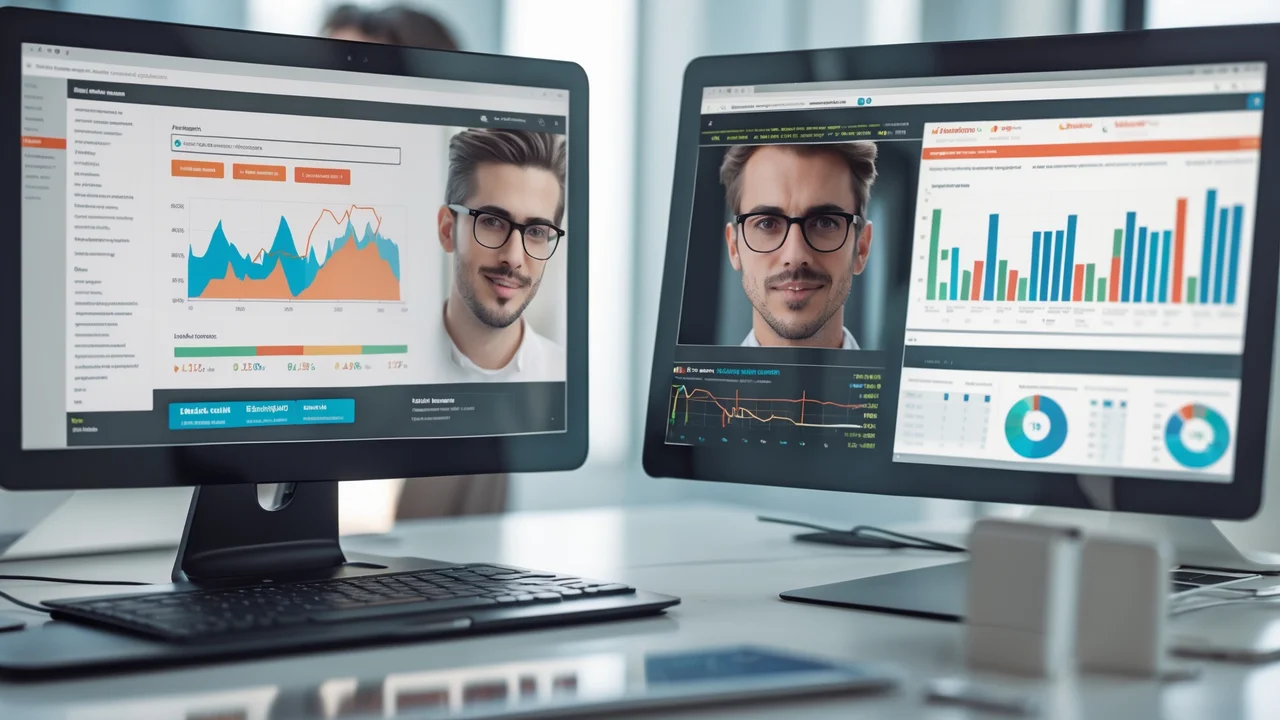Your e-commerce site generates traffic, but do you really know its performance?
If you’re navigating blindly through your data, you’re probably missing golden opportunities. And in a market where the smallest optimization can represent thousands of dollars in additional revenue, that’s a luxury you can’t afford.
Today, I’ll show you how to transform your numbers into profitable decisions with a simple and direct approach. No complicated jargon, just concrete insights you can apply tomorrow.

Why performance analysis has become critical
Today’s market reality
Let’s be frank: e-commerce has become ruthless. Customers compare prices in 3 clicks, leave if your site takes 4 seconds to load, and won’t hesitate to order elsewhere if the experience isn’t perfect.
In this context, analyzing your performance is no longer an option—it’s your lifeline. Brands that master their data make informed decisions while others… guess.
A concrete example? One of my fashion clients doubled her revenue in 6 months simply by identifying that 67% of cart abandonments happened on mobile. Solution: mobile experience optimization. Result: conversion rate jumped from 1.2% to 2.8%.
The snowball effect of small optimizations
Here’s what few people realize: 1% improvement can change your business. If you generate $50,000 in monthly revenue, 1% optimization represents $6,000 more per year. Not negligible, right?
But beware: without the right metrics, you’re optimizing randomly. It’s like driving with your eyes closed and hoping to reach your destination…
The KPIs that really matter
Conversion rate: your main barometer
Formula: (Number of orders ÷ Number of visitors) × 100
Conversion rate is your business thermometer. If it’s low, your site repels customers. If it’s good, you’ve found the magic formula.
Realistic benchmark: Between 1.5% and 3% depending on your sector. Below 1.5%, there’s urgency. Above 3%, you’re among the champions.
My expert advice: Never look at your global rate alone. Segment by traffic source, device type, and landing page. You might discover that your Instagram traffic converts at 0.8% while your emails reach 5.2%.
Average Order Value (AOV): maximize every sale
Formula: Total revenue ÷ Number of orders
Increasing your average order value is often easier than attracting new customers. And with current acquisition cost inflation, it’s become vital.
Techniques that work:
- Well-calculated free shipping thresholds
- Smart product recommendations
- Irresistible bundles
- Cross-selling at the right moment
A beauty client increased her AOV by 34% simply by repositioning her free shipping threshold from $39 to $59 and proposing relevant complementary products at checkout.
Customer Lifetime Value (CLV): your long-term vision
Formula: (Average order value × Annual purchase frequency × Customer lifespan) - Acquisition cost
CLV is your strategic compass. It tells you how much to invest in acquiring a customer while staying profitable.
2025 Revolution: Dynamic CLV. Instead of calculating a static average, new platforms like Conjura analyze each customer’s potential in real-time to personalize the experience.
If your CLV is 5 times higher than your acquisition cost, you have a comfortable margin. If it’s less than 3, danger ahead.
Emerging new KPIs
LTV:CAC Ratio - The ratio between customer lifetime value and acquisition cost is becoming THE reference KPI. Aim for a 3:1 ratio minimum, ideally 5:1.
Contribution Profit - More precise than gross margin, it integrates all costs (logistics, returns, customer service). Only advanced tools like Triple Whale or Conjura calculate it automatically.
Customer Engagement Score (CES) - Measures your customers’ multichannel engagement to predict their future loyalty.
Essential analysis tools
Google Analytics 4: the foundation (free but limited)
GA4 remains the reference tool to start with, but let’s admit it: the interface has become a nightmare and data is often sampled.
What it does well:
- Native cross-device tracking
- Detailed conversion funnels
- Free up to 10 million events
Its limitations:
- Complex and unintuitive interface
- Sampling from 500k sessions/month
- Simplistic attribution (last click)
The new 2025 gems
Triple Whale - The marketing attribution revolution. This platform centralizes all your advertising data (Meta, Google, TikTok) with a proprietary attribution algorithm much more accurate than “last click.”
Price: from $199/month (based on your GMV). Expensive but profitable from $2M annual revenue.
Conjura - The rising French outsider. Unlike Triple Whale which focuses on marketing, Conjura analyzes real profitability down to the SKU level. It integrates all costs (advertising, logistics, returns) to give you true profit per product.
More affordable than Triple Whale and particularly suited to omnichannel brands.
Shippingbo Analytics - The free French solution! Perfect for starting without breaking the bank. Clear interface, essential KPIs, ideal for SMEs wanting solid performance without complexity.

Hotjar: understanding user behavior
Price: From $32/month
Hotjar reveals what numbers don’t say. With heatmaps and session recordings, you literally see how your customers navigate.
Game-changing use case: A client had an “Add to cart” button nobody clicked. Heatmaps revealed it was in a “dead” zone. Moved 200px higher: +23% conversions immediately.
Effective analysis methodology
Define your objectives first
Before drowning in metrics, ask yourself THE question: what do you want to improve as a priority?
- Increase revenue?
- Reduce acquisition costs?
- Improve customer retention?
- Optimize margins?
Each objective requires different KPIs. Don’t track 50 metrics, focus on the 5-7 that directly impact your objectives.
The segmentation rule
Never look at an isolated global figure. Everything must be segmented:
- By traffic source (SEO vs Paid vs Direct)
- By device (Desktop vs Mobile vs Tablet)
- By period (weekday vs weekend, season)
- By customer type (new vs returning)
A global conversion rate of 2.1% can hide catastrophic mobile performance at 0.8% and excellent desktop performance at 3.4%.
Identify priority friction points
Foolproof method:
- Analyze your conversion funnel step by step
- Identify where you lose the most people
- Prioritize corrections by potential impact
- Test one improvement at a time
Concrete example: If 1,000 people visit your site, 300 add to cart, 150 reach checkout but only 50 order, your problem isn’t traffic but the ordering process.
Costly mistakes
Relying on vanity metrics
The classic trap: “Great, I had 10,000 visitors this month!”
Reality: If those 10,000 visitors only generate 50 orders, you have a serious conversion problem. Prefer 2,000 qualified visitors who convert at 4%.
Changing everything at once
Impatience kills optimization. If you modify 5 elements simultaneously and your conversions explode… which one worked?
Golden rule: One modification at a time, measure impact, then move to the next.
Ignoring seasonality
Comparing your January sales to December sales without considering seasonality is like comparing apples and oranges.
Good practice: Always compare equivalent periods (January Year N vs January Year N-1).

Your immediate action plan
Week 1: Express audit
- Check GA4: Enhanced Ecommerce activated?
- Test your speed: PageSpeed Insights on your key pages
- Analyze the funnel: where do you lose the most customers?
- Install Hotjar: heatmaps on your 3 main pages
Week 2-3: Quick wins
- Optimize your checkout: remove unnecessary steps
- Adjust thresholds: free shipping, promotions
- Set up recovery: abandoned cart emails
- Segment your audiences: in GA4 for finer analysis
Month 2-3: Advanced optimization
- A/B tests: buttons, descriptions, product photos
- Personalization: recommendations based on history
- Loyalty programs: to increase CLV
- Advanced attribution: evaluate Triple Whale or Conjura if revenue > $2M
My final advice
Analyzing your e-commerce performance is like learning to drive: at first it’s confusing, then it becomes natural, and finally it saves your life.
Essential points to remember:
✅ Focus on KPIs that directly impact your revenue: conversion rate, CLV, LTV:CAC ratio
✅ Invest in the right tools: GA4 to start, Hotjar for behavior, and a specialized tool according to your level
✅ Segment everything: never look at global averages
✅ Optimize step by step: one modification at a time, then measure impact
✅ Think long term: CLV and retention are worth more than acquisition at any cost
The truth? Your competitors who master performance analysis are gaining ground every day. While you look at your stats wondering “why isn’t this working better,” they know exactly what to improve and how.
So, ready to transform your data into a cash machine?







